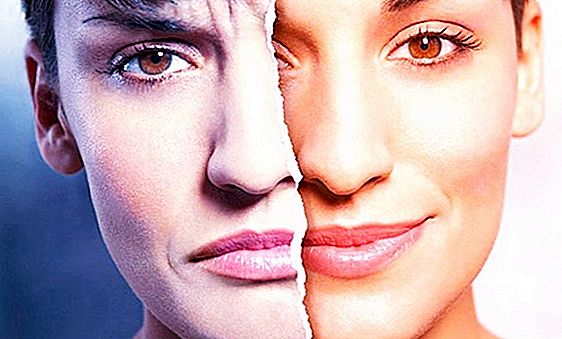Manic-depressive psychosis, psychologists better known as bipolar or manic-depressive disorder - a mental illness associated with mood swings. Patients can go through several phases - episodes, some of which are productive and do not prevent a person from functioning in society, while others can be dangerous either for the patient himself or for others.

What is bipolar disorder?
Initially, the term "manic-depressive psychosis" refers to all mood disorders. The concept was introduced at the end of the 19th century and lasted until the sixties of the 20th century, when the German scientist, psychiatrist Karl Leonhard created his nosological classification of psychotic diseases. Leonard introduced the term "bipolar disorder" and contrasted it with "unipolar disorder." Simply put, he separated patients who are in a major depressive disorder from those whose episodes of depression alternate with periods of mania. Psychosis, present in one of the names of the disease, is one of its most serious stages.
About 4% of the world's people suffer from bipolar disorder.
According to the severity of the disease, the disease is divided into bipolar disorder type I and II and cyclotomic disorder. Type I bipolar disorder is the most dangerous, depressive periods can interfere with social and personal life, and manic episodes can be dangerous both for the patient himself and for others. Type II bipolar disorder is less dangerous, but the depressive phases in it are longer, but manic episodes usually take the form of hypomania, a less severe disorder. Cyclotomy disorder is the mildest type of disease.
Often in bipolar disorders, those that are seasonal in nature and disorders with a rapid phase change, a cyclical alternation of episodes are distinguished.
Hypomanic and manic episodes
Hypomania is one of the “easy” phases of bipolar disorder. During it, patients can only be slightly more excitable, but active, energetic and even possibly more successful. Hypomania, as well as mania, is characterized by increased self-confidence and, to varying degrees, self-esteem.
Passing from goipomania to mania, it hurts to feel not just smart and successful, but “bulletproof”, infallible, full of brilliant ideas and energy for their embodiment. The patient in the manic episode "chokes" in the abundance of his own thoughts, his speech becomes chaotic and spontaneous, his tongue does not keep pace with the words that are born in exhausted reason. It is difficult to kill patients, sometimes they begin to speak in rhyme and not only frantically gesticulate, but also dance, without ceasing to broadcast. A characteristic symptom of a manic episode is insomnia. It seems to patients that they have so much energy that 2-3 hours of sleep per day is enough to restore strength.
Other symptoms of the manic phase are:
- increased sex drive;
- relaxed and risky behavior;
- increased irritability;
- unreasonable financial investments, binges and risky expenses;
- craving for alcohol and drugs.
It is difficult for the patient to concentrate; his thoughts jump from one to the other. It is in the manic phase that a person can become aggressive and prone to psychosis, up to delusional and hallucinogenic disorder. Manic episodes are dangerous not only for patients, but also for others.
Depressive episodes
During the depressive phase, the patient may not get out of bed all day, motivating him with no need to go somewhere, and there is no strength for this. the activity of a manic episode is replaced by apathy, the confidence in one’s own exclusiveness - by the belief in the worthlessness and futility of one’s existence.
Symptoms of a depressive episode are:
- abnormal decrease or increase in appetite;
- loss of sex drive;
- indecision;
- increased anxiety;
- heightened guilt;
- loss of concentration.
The depressive phase can also become psychotic and be accompanied, in an acute form, by delirium and hallucinations. In a depressive episode, the patient is most often dangerous for himself, because he is often visited by thoughts of suicide. which he can realize.
